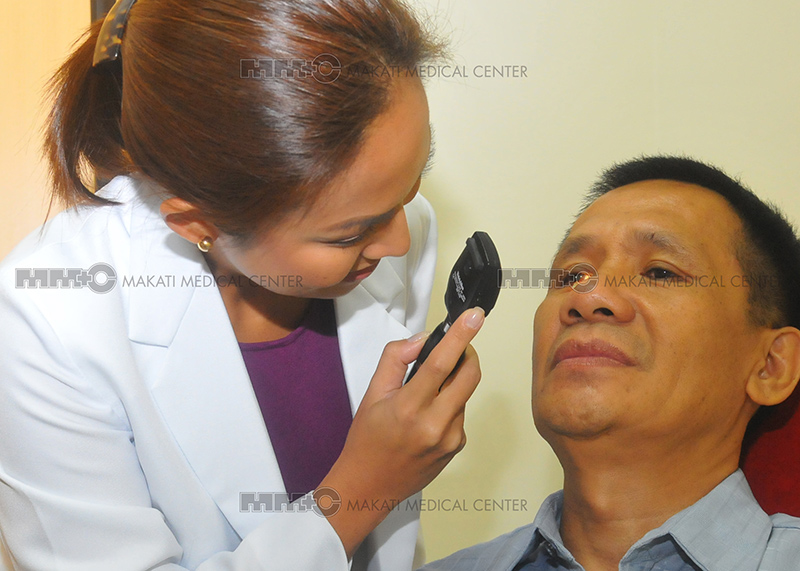The Eye Care Center (Dr. Carlos L. Sevilla Center) is a diagnostic and laser treatment facility offering a comprehensive set of tests for holistic eye care. It boasts of the latest and most progressive diagnostic and treatment technologies, led by the expertise of the country’s finest Ophthalmologists. The Center aims to provide the most accurate diagnoses and the best care possible for various eye diseases, including glaucoma, cataract, diabetic retinopathy and other diabetes-related problems, dry eye disease, age-related macular degeneration, and diseases in the retina, among many others.
Most Common Conditions:
What are the risk factors?
What are the symptoms?
How is it diagnosed?
An Ophthalmologist can assess a patient’s visual function by using a Visual Acuity Test and from there, can check for the presence of cataractous lenses of the eyes through a slit lamp biomicroscope. The Ophthalmologist may opt to dilate the pupils using medication to facilitate better visualization of the cataracts.
How is it treated?
For advanced Cataracts, the only effective treatment in surgery. The affected lens is removed and replaced with an artificial intraocular lens. Prior to the surgery, Biometry testing can be done using either Optical Coherence Interferometry or Ultrasound technology. This is used to measure the appropriate intraocular lens to be implanted.
What are the risk factors?
What are the symptoms?
How is it diagnosed?
Patients suspected to be at risk for Diabetic Retinopathy can be assessed by an Ophthalmologist through a Dilated Fundus Exam (DFE) using a slit lamp biomicroscope or an indirect ophthalmoscope to assess the retina. In addition, several diagnostic tests can be conducted including:
How is it treated?
The main goal of treatment is long-term blood sugar control. This helps to prevent the development and progression of Diabetic Retinopathy. Other treatment options are done depending on the stage of the disease, including laser treatments to the retina, injection of special medications inside the eye, and eye surgery in very severe cases.
What are the risk factors?
What are the symptoms?
How is it diagnosed?
An Ophthalmologist can detect the causes by conducting an eye exam which includes a complete history of the patient’s overall health and the application of different dyes on the eye to check for tear evaporation patterns. An Osmolarity Test can also be prescribed to measure the salt and water content of the tears.
How is it treated?
Commonly, the symptoms of dry eyes can be easily treated with lubricant eye drops. Depending on the possible causes of these symptoms however, the Ophthalmologist can prepare a tailor-fit treatment regimen.
This is an eye disease that can cause gradual destruction of the optic nerve, usually due to fluid buildup and increased eye pressure. The optic nerve is the structure that sends visual signals from the eye to the brain. Damage to the optic nerve, including damage caused by Glaucoma, can lead to blindness.
Because the loss of vision often occurs gradually over a long period of time, it has come to be known as the “silent thief of sight”. Symptoms often only occur when the disease has already advanced.
What are the risk factors?
What are the symptoms?
How is it diagnosed?
In the clinic, an Ophthalmologist can examine the optic nerve, measure the eye pressure, and view the anterior angle of the eye. Diagnostic tests can also be done to confirm the diagnosis of Glaucoma, including:
Can it be treated?
There is no cure for Glaucoma and the visual damage is permanent. Treatment, however, can delay its progression. The earlier the detection, the greater the chance of preserving sight.
How is it treated?
Glaucoma can be treated with eye drops. More severe and lesser controlled cases can be treated with laser treatment or surgery, depending on the type and stage of the damage to the eye.
Services Offered:
Chairperson of the Department of Ophthalmology:
Sherman O. Valero, MD
